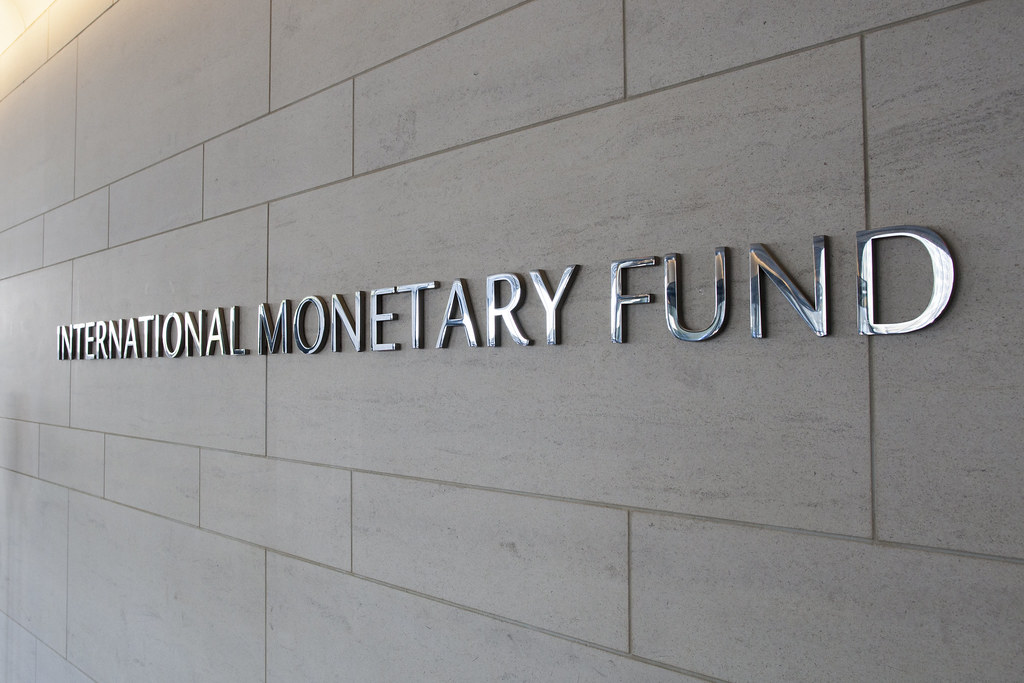
The International Monetary Fund (IMF) just slashed the United States’ growth forecast for this year—in half. This downgrade is the biggest cut of any advanced economy. It also lowered its forecast due to heightened policy uncertainty, rising trade tensions, and weaker than expected growth in consumer spending. This change has fueled concern over the broader economic consequences of U.S. trade policies. These sentiments grew recently with the new rollout of tariffs on several import categories.
The U.S. government essentially just passed a 10% tax on imported goods from nearly every country in the world. They instituted an incredible tariff of as much as 145% on Chinese imports. These steps are in line with President Donald Trump’s larger strategy to encourage the production of goods made in America and to foster investment here at home. Trump thinks that these tariffs will motivate consumers to purchase American-made goods. He further forecasts they will increase tax revenues and bring billions in new investments into the economy.
IMF’s Downgrade and Global Economic Caution
For all these claims, the IMF’s downgrade makes clear the sense of caution pervading the global economy. Unseeded growth outlook Analysts are warning of a deeper U.S. shallow recession by the fall of this year. As the Institute of International Finance has pointed out, the precise dollar amount of the downgrade is still unknown.
UK’s shadow Chancellor Rachel Reeves with a Great Recession prognosis. She acknowledged that while the growth forecast has been downgraded from 2.7% to 1.1% the UK remains, according to the OECD, the fast-growing economy of all European G7 countries. Canada’s growth outlook was lowered to 1.4% from 2%. This shift is due to unpredictabilities around tariffs and other trade barriers, as well as continued geopolitical turmoil.
Among advanced economies, Mexico experienced the biggest cut to its growth forecast. This change creates a powerful reminder of the broader impacts of North Carolina’s trade war with its neighbors to the north. On the plus side, Spain is a global outlier among advanced economies. Its 2025 growth forecast has been boosted to 2.5%, up from an earlier 2.3% projection.
Germany’s Economic Outlook Amid Global Uncertainty
Germany is expected to grow by 1.2% in 2026, partially buoyed by increased government spending aimed at revitalizing its economy amidst global uncertainties. Political and economic pressures are escalating. As Pierre-Oliver Gourinchas, chief economist at the IMF, warned before their recent meeting, the global economy is walking a tightrope facing historic challenges.
“It is now being severely tested once again.” – Pierre-Oliver Gourinchas
Gourinchas cautioned that firms will almost assuredly respond to this increasing uncertainty. They are being asked to rein in their spending and direct purchasing.
“Faced with increased uncertainty… many firms’ initial reaction will be to pause, reduce investment and cut purchases.” – Pierre-Oliver Gourinchas
In retaliation for U.S. tariffs, China has responded in-kind, hitting American products with tariffs of up to 125%. This tit-for-tat retaliation adds fuel to the already robust trade tensions. It too makes a mockery of efforts to restore and advance real economic cooperation between the world’s two largest economies.
The ramifications of these changes are felt well beyond our own country, as international economic security waits in the balance on mutually beneficial trade partnerships. As countries navigate through these turbulent times, the focus remains on mitigating risks associated with tariff implementations and sustaining consumer confidence.
What The Author Thinks
The IMF’s downgrade of the U.S. growth forecast reflects the mounting risks that tariffs and escalating trade tensions pose to the global economy. While Trump’s protectionist policies are aimed at boosting domestic production, they are failing to deliver the desired economic benefits. The growing uncertainty and retaliatory measures from other countries are creating a fragile economic environment, one where consumer confidence and investment are at risk. With global cooperation being strained, the path forward for the U.S. economy seems fraught with challenges that could have lasting consequences.
Featured image credit: World Bank Photo Collection via Flickr
Follow us for more breaking news on DMR
